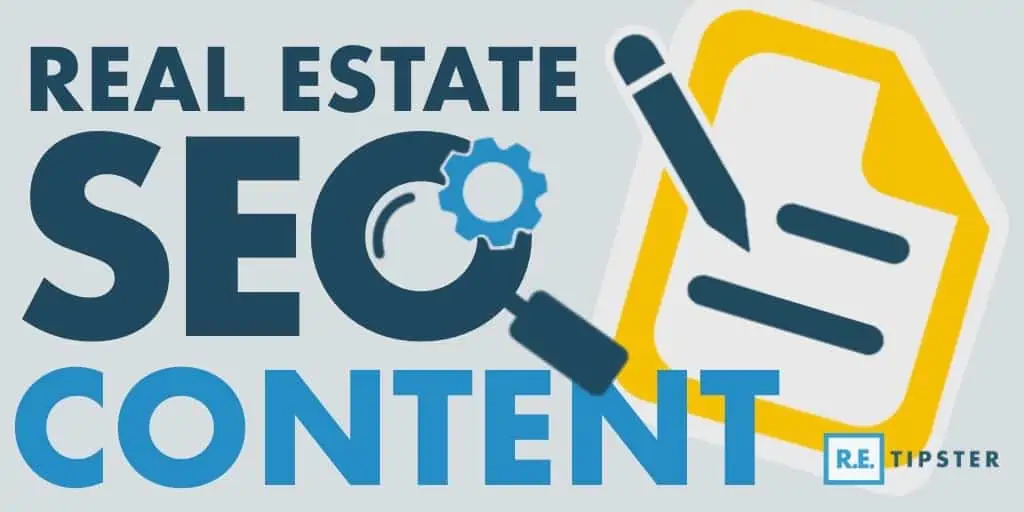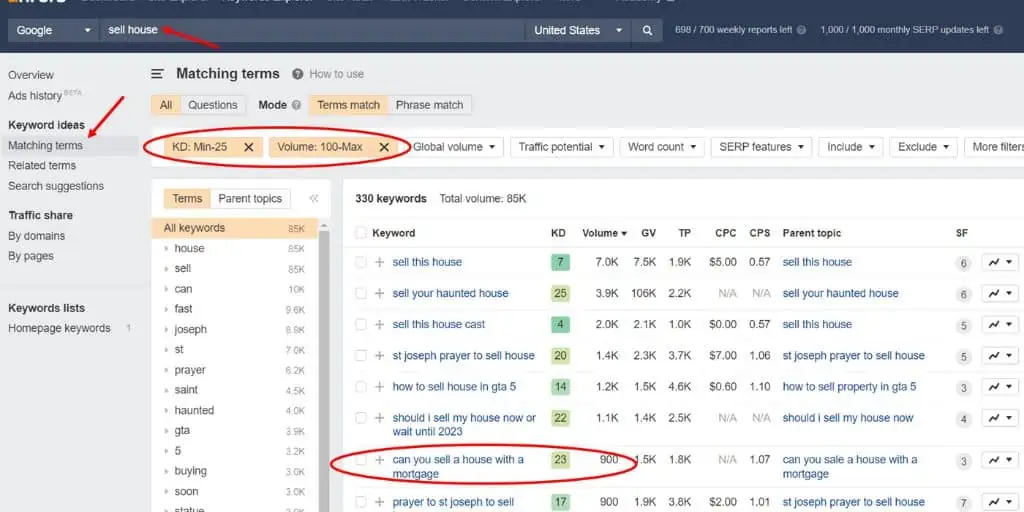
So you’ve decided to do SEO to generate motivated seller leads through your website.
That’s awesome! If you put in the effort required to get to the top of Google in your market, you will have a consistent pipeline of people that need to sell their houses.
And the good part is, they come to you!
So why isn’t every real estate investor doing SEO?
The Long Game
In all honesty, SEO for real estate investors is a long game. Even with serious effort, it can take six months to a year to start seeing results.
Most real estate investors don’t have the patience to wait that long. They’d rather start generating leads right away through more traditional marketing strategies.
However, once you build a website optimized for search engines, you will have a lead machine that requires little maintenance.
Even though ranking a website takes some time, the good news is that the work required to get there can be simplified. Part 1 of this multi-parter has covered how to get started, which pages you need, how to write content, website structure, and more.
But now, if you’re ready to build a solid foundation for a professional website, let’s get started!
How to Start a New House Buyer Website
You're ahead of the game if you already have a house-buyer website. But even if you don’t have one, it’s not as hard as it seems. Services such as Carrot allow you to build a website in about ten minutes personalized to your organization and area. Just fill in your information, which will auto-populate into a premade template.
There is a drawback to this convenience, though. Probably 90% of the sites made through Carrot look the same because most investors that use this service don’t want to go through the hassle of designing their own site.
But if you are serious about getting your site to rank and converting traffic into leads, it is essential to make your site your own. Not only will all of the duplicate content make it harder to rank on Google, but using your own language and unique value proposition will likely resonate better with your traffic.
Check out this site for ideas on personalizing your house buyer website.
Building Your Website’s Primary Pages
Nearly every successful real estate investing website has specific pages that serve as the core of your site. These are where most of your traffic will spend the bulk of their time.
In no particular order, here are some of these primary pages:
- Homepage. This is your primary landing page and will likely be the one that ranks for the most keywords that motivated sellers to search. It serves as the hub for all your other pages.
- “How It Works.” Not phrased exactly, but this page gives a detailed look at how you calculate offers and what a seller should expect when they request an offer from you.
- About Us. This page allows you to connect with your traffic on a personal level. Instead of a faceless organization, potential sellers can see and hear about who they will be working with.
- Sell Your House. This page serves as the destination for someone ready to request an offer from you. Your other pages should link to this one where it is appropriate.
- Reviews. Reviews are a huge deciding factor for any type of consumer these days. Testimonials can easily sway the decision of anyone on the fence, so this page should display all of the positive reviews from your past clients.
Writing Content for Your Primary Pages
When writing content for your primary pages, your primary focus should be to connect with your traffic and get them to fill out a form. Remember that your ideal website visitor is someone who needs to sell their house and is likely stressed about it. If you can assure them that you understand their situation and can help them, the odds of them reaching out to you are very high.
Most content writing for SEO is much more technical than the approach we’re suggesting for your primary pages. For example, using the proper keywords is vital when writing a blog.
While it is important to include specific keywords on your primary pages, such as “sell your house [your city]” and “we buy houses [your city],” that shouldn’t be your main focus. Instead, you should focus on building credibility with your traffic and keeping them hooked. Then, you can sprinkle in keywords where it makes sense.
Why User Engagement Is Important
If you only cared about getting traffic to your site, user engagement may not mean as much to you. But who cares how much traffic you get if none of them request an offer from you?
Your traffic is likely looking at your competition on Google as well. If your site looks and feels the same as theirs, you won’t get many conversions.
On top of missing out on potentially motivated sellers, having a poor user experience can negatively affect your rankings.
Google’s job is to provide the best search results for any query. One of the data points they use to accomplish that is how traffic behaves on each site. If your traffic spends more time on your site than on your competition, Google perceives that you are providing more value. As a result, Google pushes your site further to the top of relevant search results.
However, if traffic frequently bounces from your site to your competitors, you will likely suffer from a loss in rankings.
How to Write Content That Resonates With Your Audience
Before you begin writing content for your primary pages, you must spend some time planning and creating an outline. This will allow you to set overall goals for each page and write cohesive content instead of bouncing all over the place.
Here are questions you should ask yourself for each of your primary pages:
- What is the purpose of this page?
- Why is my traffic here, and what problems are they facing?
- What is their desired outcome?
- How can I assure them I can solve their problems?
- What unique value propositions do I offer sellers?
After you consider these questions and write out your responses to each one, you can begin creating an outline for your content.
Outline for Your Homepage
Since your homepage will likely be your most important page and draw the most traffic, let’s consider a possible outline.
Let’s take it one step at a time.
- Step 1: Right off the bat, let the visitor know they are in the right place if they need to sell a house. Your first few sections need to give a high-level overview of what you do and how you can help them.
- Step 2: Hit them with a few testimonials. Put yourself inside the mind of your traffic. They come to your site, see that you “buy houses fast,” and think, “Is this legit?” You would probably do the same thing if you were in their shoes. The fastest way to squelch this skepticism is to show them reviews from people you have helped in the past.
- Step 3: Elaborate on what makes you different from other investors and how you can make the sales process easy for them. An important point here is to include a friendly picture of yourself. When your traffic sees who they will be working with and that you are relatable, they will be much more willing to reach out to you.
- Step 4: Dive into some pain points your ideal traffic is dealing with so they know you understand their situation. It is important to go beyond the typical pain points you’re familiar with, such as vacant houses and tired landlords. Think about people you have worked with in the past and what their true motivations were.
- Step 5: Present yourself as their solution after identifying with their situation. But you can’t do it obnoxiously. Talk more about the benefits you offer and build credibility. This is where a picture of you and a seller can work wonders.
- Step 6: At this point, your traffic will likely want more details about how everything works. You can point them to your other pages, such as How It Works, About Us, or Sell Your House to meet that desire.
- Step 7: After this, your next section should be a call to action for them to fill out your form and request an offer from you!
Words Alone Aren’t Enough
If you follow the framework above for your homepage and the rest of your primary pages, you will be well on your way to creating content that converts traffic into leads!
However, words alone will not cut it. Having the proper rhetoric is only the beginning. Making your website look professional and inviting is just as important in building credibility with your traffic.
Think about it. Everyone is so conditioned to scrolling through social media feeds that they immediately skip over large chunks of text. They don’t even think about it—it’s a knee-jerk reaction.
This is where the design of your website is vital. You must convey your information with words and pictures and tie it together with an aesthetic design.
If this intimidates you, consider hiring a freelance website designer to work on the visual portion of your website. Either way, you cannot neglect this step. Otherwise, you will sabotage all of the work you put in on everything else!
Use Your Blog to Boost Your Authority
Your primary pages are the most critical part of your website because they are where your traffic will spend most of their time and where most of your conversions will take place.
However, you will severely limit yourself if you let your blog fall by the wayside. Not only will blog articles increase your overall authority in the real estate space, but they can also intercept traffic searching for a particular topic.
Use Your Blog to Acquire Backlinks
As we mentioned, the second pillar of SEO is building backlinks from other websites. As you work to build these links, you will learn what it takes to convince a website owner to link to you. In general, another website will only link to you within their content if that link provides value for their traffic.
Unfortunately, linking to your homepage trying to persuade homeowners to sell their houses to you does not provide much value within most content.
There’s a creative way around it, though. Suppose you’ve written a blog post about seller financing. That could easily fit into many pieces of content, and writers would be happy to link to your article to allow their readers to dig deeper into that topic.
By spreading backlinks across all of your articles, you will raise the overall authority of your website and make it easier for your primary pages to rank. Beyond that, you can pass over some of the benefits from these incoming links to your primary pages via internal links.
Say you write an article and build tons of backlinks to it, and within that article, you add a link to your homepage. That internal link serves as a conduit for a large percentage of the power from those incoming links to pass through to your homepage.
This is a way to power up pages without directly building links to them, and it is all made possible through blogging!
How to do Keyword Research for Your Blog
So you’re ready to start writing articles for your blog. But what do you write about?
The key is to find keywords that people are frequently searching for that you can easily rank for. The best tool to do this with is Ahrefs. Their Keywords Explorer enables you to find keywords within the real estate industry, filter them by how much traffic they get, and how hard it will be to rank for them.
Here is an example of a search within the Ahrefs Keywords Explorer. We searched for “sell house,” clicked “Matching Terms,” and applied a couple of filters.
Near the top of the list, you can see a great candidate: “can you sell a house with a mortgage?” This is a fantastic article to write about because 900 people are searching for this monthly and the Keyword Difficulty (KD) is relatively low.
Your blog content should include general content like the example above and more targeted keywords for your market.
In general, broader topics will typically generate more traffic than local keywords. For example, more people search for “how much is my house worth” than “how to sell a house without an agent in [your city].”
However, local keywords usually lead to more direct conversions for your business. Because of that, you should focus on both because both of them can help you. General keywords that draw large amounts of traffic will build the overall authority of your site, and locally targeted keywords will directly generate more motivated seller leads.
Enlisting AI to Help You Write Content

And in reality, simply writing about a topic and including the points you think are important can backfire. It might be highly insightful, but if it doesn’t match what Google thinks it should look like, you will have difficulty getting traffic.
Fortunately, you can use Surfer SEO, a tool that scans the top-ranking pages for your target keyword and gives you a list of guidelines for your article. For example, it tells you how many words, images, paragraphs, and headings you should have and how many times to include specific keywords.
Writing your article within Surfer assigns a score based on how well you are meeting the guidelines. Your score updates in real-time as you include more keywords and get closer to the recommended word count.
Technical SEO Strategies to Optimize Your Website’s Content
Now that we’ve covered writing content and designing your website, you can fine-tune your website to generate as much traffic as possible.
There are over 200 ranking factors that Google looks at when comparing websites. What those 200 are no one knows, but SEO analysts found that the few below can move the needle (and they’re fairly simple, to boot).
Minimize Page Load Speed
One metric that Google considers when choosing which pages to include in search results is how long they take to load. Remember, Google’s job is to provide the best results for users, and people today are unwilling to wait ten seconds for a page to load.
First, run a benchmark on how long your site loads. Running a report on a site like GTMetrix is a good start.
If you find that your site loads slowly, you can start by cutting down on excessive graphics, such as pictures and video. While images are essential for user experience, they can backfire by killing your load speed.
However, there are some simple ways to cut down on their effects.
First, preview a typical page on your site, right-click, and select “inspect.” From this view, you can see what size each image renders at. Let’s say you have an image showing up at 600 x 400 (pixels). There is no reason to use a massive original file because your website is shrinking it anyway, and the file size will drastically slow down your load speed.
To fix this issue, simply resize the image to the appropriate number of pixels and re-upload it to your page. Doing this alone will drastically shrink the file size.
If you want to take it further, you can go to TinyPNG and compress your images. This site will compress your images without much loss of quality.
Create Content Clusters
Instead of creating standalone blog articles, developing clusters of blog articles that complement and link to each other is much more effective and organic.
The most straightforward approach to content clustering looks like this, in typical order:
- Create a “pillar” post that broadly covers a topic.
- Create supporting articles that dive into special topics surrounding the pillar.
- Link back and forth between the pillar and supporting posts.
There are several benefits of creating these content clusters versus writing standalone articles.
First, having multiple articles surrounding a subject presents you as an expert in that area—not only in the general public’s eyes but also in Google’s.
Also, having multiple supporting articles linked to your pillar post will allow readers who want more information to dig deeper while remaining on your site. This looks great from a user experience perspective.
Lastly, when you build backlinks to one of the articles in a content cluster, they all benefit because of the internal links between them. They all feed off each other, and this synergistic effect is much more powerful than building links to individual posts.
Link to Authoritative Sources
Linking to other websites may sound counterintuitive. After all, shouldn’t you keep all of your information in-house and keep your traffic on your site as long as possible?
The truth is that only linking to your own resources and having zero outbound links is completely unnatural. On the other hand, linking to informative content shows Google that you value providing helpful information for your audience.
A good rule of thumb is having two or three external links on each page. This should be pretty straightforward in most cases. For example, if you’re talking about closing costs associated with buying a house, you can link to an article that summarizes typical closing costs.
By linking to other leaders within the real estate industry, you will posture your website as one that also provides valuable content. You’ll earn more visibility on Google because of it.
Optimize Your House Buyer Website For More Conversions!
The world of SEO can be intimidating. But if you follow the steps here, you will have a website that’s head and shoulders above most real estate investor websites.
In summary, your main tasks are to create primary pages that look professional and resonate with motivated sellers and then consistently publish original, informative content on your blog.
If you do this, your website will be perfectly optimized to rank well and generate traffic. Couple this with building high-quality backlinks, and you will generate motivated seller leads in no time!













